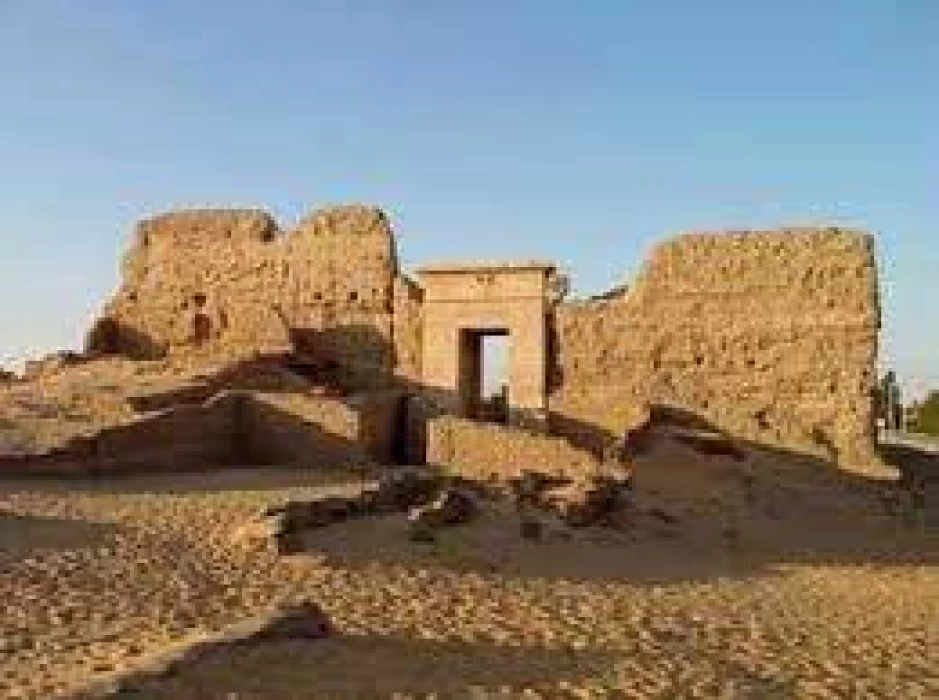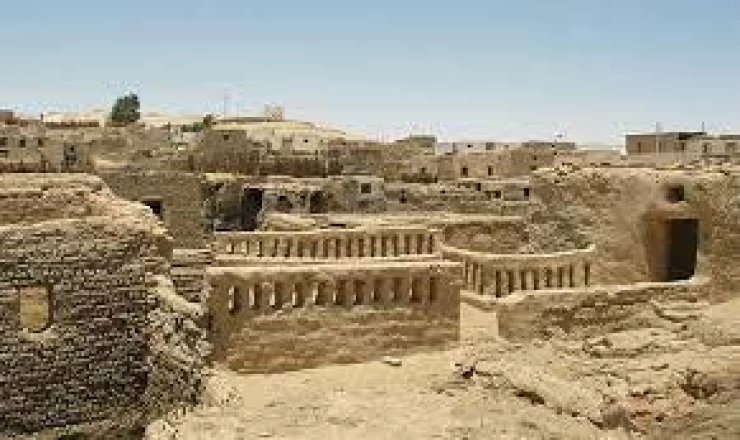
Temple of Qaser Al Zayyan
Temple of Qaser Al Zayyan
Al-Zayyan Temple in Kharga. the crossroads of the two trade routes in ancient southern Egypt, about 26 kilometers south of the city of Kharga in the New Valley, and at a distance of 3 kilometers from the Ghouita Temple.
It was of particular importance in the Roman era, as it was surrounded by fertile agricultural lands. The current name is (Qasr Al-Zayan Temple), and the origins of this name go back to after the Islamic conquest of Egypt, where the prevailing belief was that the tall buildings built of stone and walled with a huge wall were “palaces”, and accordingly this temple was called Qasr Al-Zayan, and the word Al-Zayan came in relation to To an old eye that was on the site, and after the people settled in this site, the name Zayyan Palace was given to the entire area.
The history of the construction of the temple dates back to the Roman era, in the period that preceded the reign of Emperor Antonius Pius, who restored and maintained the temple, and recorded these works in Greek on the doorstep of the hall leading to the Holy of Holies. The third reign of Emperor Antonius Pius corresponds to August 18, 141 AD. If you are a historical person and interested in discovering more about the history of Egypt, book our Egypt tours.
The temple takes a south-north axis, and it is a small building made of sandstone, consisting of a hall that leads to the Holy of Holies, and in the middle of it is a pediment in the northern wall that contained the statue of the god “Amun Hept”, who the temple was dedicated to worshiping, and around this small building there is a group of building remains It was built of mud bricks surrounded by a huge wall containing the gate of the temple, and the most important characteristic of this temple is the presence of a water well inside the wall, that you will discover during our Egypt day tours, which provided the necessities of life for the service of the temple, as was the area adjacent to the temple, filled with water needed for agriculture, and depicting most of the scenes, the Emperor «Antonius Pius "stands in the Egyptian royal body (the borrowed royal chin and on his head the double crown and sometimes the crown of the north and the crown of the south, wearing the royal kilt, and holding the insignia of governance: the flail, the wand of haqqa and the nakhkh), while offering offerings to the Egyptian gods, especially the god "Amun Hept", who dedicated the temple to his worship. What is your opinion about checking our Egypt travel packages to Kharga Oasis to rest your mind with the sky and clear sands?
Muhammad Kabeesh, the chief inspector of antiquities in the museum stores in Kharga, confirmed that gifts and offerings were presented by the emperor to the god “Amon Hept”, but the most important texts are what exists about “Nisha” in the Holy of Holies, and these texts documented the fate of the Roman Emperor “Antonius Pius”.
By trying to prove his affiliation with the god “Amon Hept”, and it came in the text: “I have come in your presence, O my father Amon Hept, O Master Hept, O great idol, O mighty one, I crossed the mountains for your sake, carrying everything in them for you, I have been given strength by virtue of your strong arm, so increase my strength to defeat your enemy and all enemies.
The Antiquities Authority carried out excavations inside the temple, which included several seasons (years: 85, 86, 87), where the entrance to the temple and the gate were cleaned of sand, as well as the corridor between the gate and the hall of the temple, that is included in our Egypt Luxury tours. Excavations were also carried out in the part between the corridor and the western wall.
Excavations revealed the discovery of a water well that was used to transport water outside the temple by means of pottery pipes. All this historical information will be relevant and clear during our Egypt Classic tours.
Many pottery vessels and coins of various shapes and sizes were also found. The Japanese mission also worked in the temple, which removed and translated the inscriptions in the temple.
This mission also carried out excavations. In the area west of the temple, these excavations resulted in the discovery of the remains of the residential city that was located next to the temple, and that city was dated to the end of the Roman era.
Cairo Top Tours will provide you various unique tours from egypt travel packages upon your your request, seize the opportunity and book your tour.















